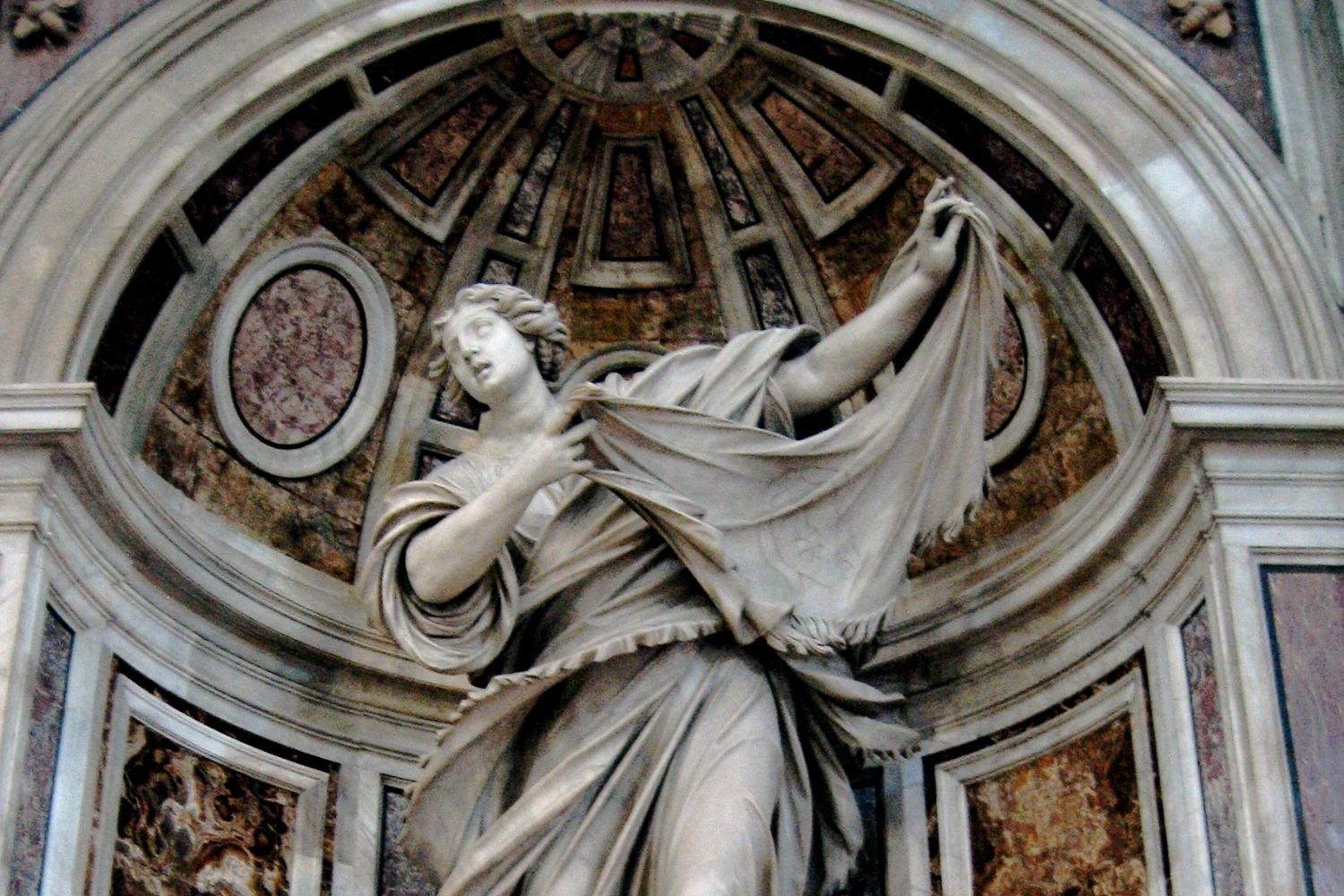
“Veronica does not appear in the Gospels. Her name is not mentioned, even though the names of other women who accompanied Jesus do appear. It is possible, therefore, that the name refers more to what the woman did. In fact, according to tradition, on the road to Calvary a woman pushed her way through the soldiers escorting Jesus and with a veil wiped the sweat and blood from the Lord’s face. That fact remained imprinted on the veil, a faithful reflection, a “true icon.” This would be the reason for the name Veronica (vera icon, or true image). If this is so, the name which evokes the memory of what this woman did carries with it the deepest truth about her” (St. John Paul II, Good Friday Stations of the Cross, 21 April 2000).
Although not mentioned in Scripture, pious tradition has long held forth the story of a woman wiping the face of Christ as he carried his cross, in contrast to and in spite of the brutality of the Roman soldiers escorting him. As Christ continued on, the woman discovered that a miraculous portrait of Christ’s face had remained on the cloth.
The miraculous cloth – known as the Veil of Veronica or sometimes simply the Veronica – is generally considered to have been lost to history, with numerous images claiming to be the original.
That an image was venerated as the Veil of Veronica in Rome, especially from the eleventh through the fourteenth centuries, is undisputed. Throughout these centuries, numerous references are made to a cloth being venerated as the Veil of Veronica in Rome, often referenced by the personal notes of pilgrims and paraded in the city by Pope Innocent III. In the year 1297, the veil was officially translated to St. Peter’s Basilica, where it was prominently displayed. The story of how that image arrived in Rome is less clear. Some have claimed Veronica herself traveled to Rome before the end of her life. Others claim a more historically convoluted path. Nevertheless, as early as 705, a chapel dedicated to St. Veronica was constructed in Old St. Peter’s Basilica, possibly indicating (but far from proving) the arrival of the relic.
In the year 1527, the story of the veil becomes less clear. Some claim that the veil was destroyed when the army of Holy Roman Emperor Charles V sacked the city of Rome that year; others claim the veil was stolen by the invaders but not destroyed, and was eventually lost while being passed around the city; still others claim the veil was never found by the invaders at all. References to the veil resume in 1616, when Pope Paul V prohibited the manufacture of copies of the veil unless approved by the Vatican, and in 1629, when Pope Urban VIII ordered all copies brought to the Vatican to be destroyed under threat of excommunication. After that, the recorded history of the veil ends.
Today, an image claiming to be the original is alleged to be kept in St. Peter’s Basilica. Another image – the Manoppello Image – has been claimed to be the original: at the very least, this image has been in the possession of a Capuchin monastery in Manoppello since 1660.
Despite the historical unclarity surrounding the story of the Veil of Veronica – such as how it arrived in Rome in the first place and where the true image is to be found today – a deep, perennial desire shines forth: through the centuries, Christians have been driven by a desire to stand before God, to see the face of Christ.

The First Draught
To receive the Weekly Update in your inbox every week, along with our weekly Lectio Brevis providing insights into upcoming Mass readings, subscribe to The First Draught.
